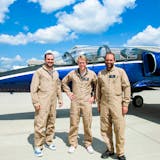A simulated swarm of millions of particles potentially laden with bacteria encircled several doctors around an operating room table, as the surgical team switched on a patient-warming system from 3M Co.
Each animated particle, displayed on courtroom screens this week, represented a skin flake 10 microns wide. Within 36 seconds, air turbulence deposited at least 60 of these flakes near a patient's knee incision in the animated computer simulation.
The sophisticated computer-generated animations depict a key theory in thousands of surgical infection lawsuits that center on 3M's Bair Hugger machine. It could be important evidence for jurors in litigation where microscopic particles are alleged to have been moved by invisible air currents into places in the body that skin normally would cover.
In a real surgery, 3M's critics say, small numbers of such particles could be sufficient to trigger a serious deep-joint infection.
Maplewood-based 3M says the animations are misleading, if not wholly inaccurate. 3M stands behind the safety of the Bair Hugger forced-air warming system, which doctors use in tens of thousands of surgeries a year.
South Carolina's Louis Gareis, 76, and his wife, Lillian, are the first Bair Hugger litigants to go on trial from thousands of similar cases. The trial began last week and is expected to run through next week. Gareis took the stand in court Tuesday.
He said a nasty deep-joint infection set in around his artificial hip shortly after it was implanted at a hospital in Columbia, S.C., in 2010, causing him to undergo another surgery to replace the infected joint. In both surgeries, he was swathed and warmed by a Bair Hugger device as a way to maintain his normal body temperature, a technique that is thought to prevent infections and speed up healing.
Gareis' infection was caused by methicillin-susceptible Staphylococcus aureus bacteria, but his legal team has no direct evidence of a specific pathogen originating inside a Bair Hugger or being propelled by air turbulence created by the device. Rather, they presented a supercomputer simulation showing how it might have happened.


